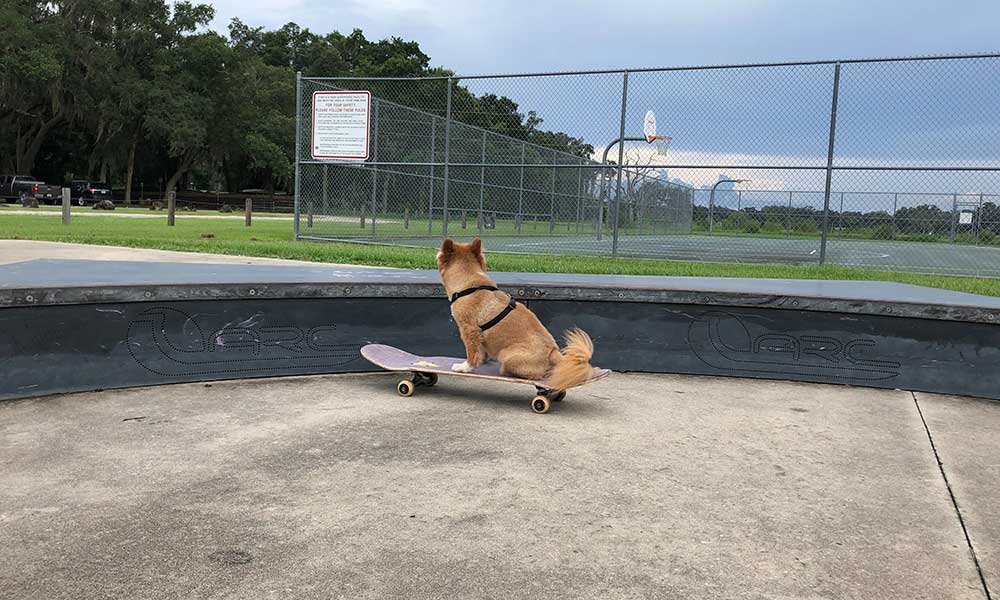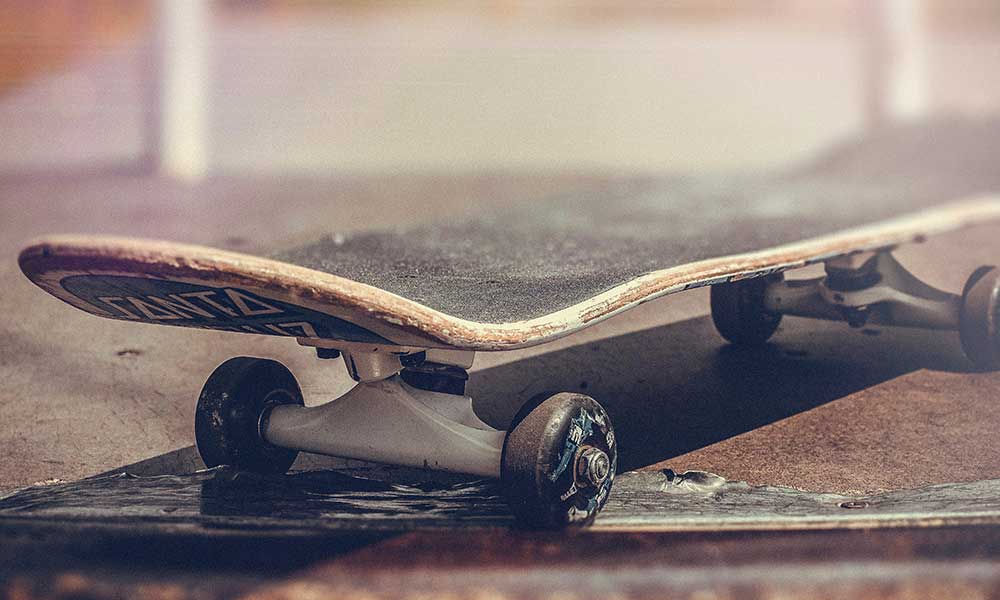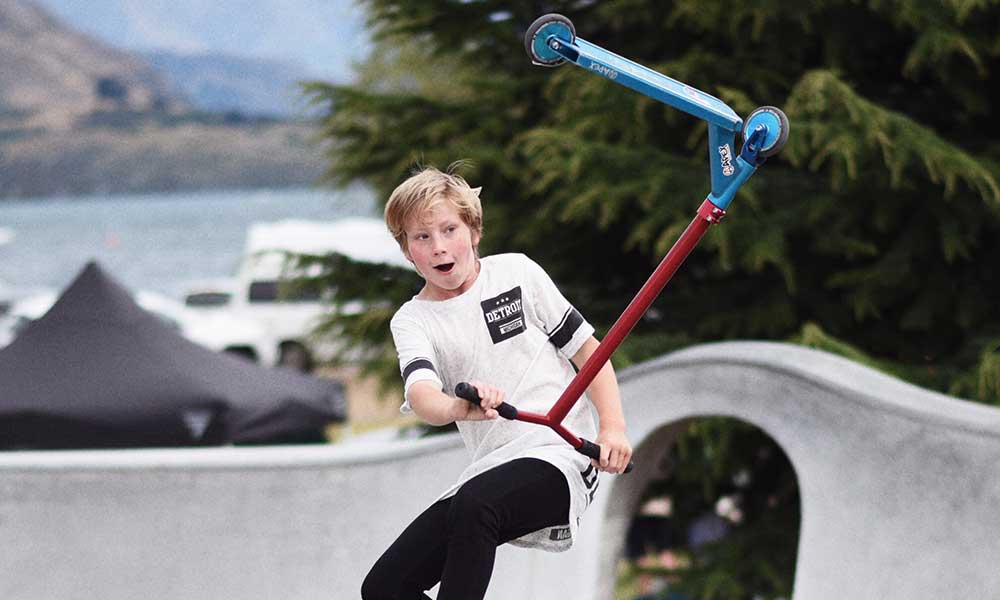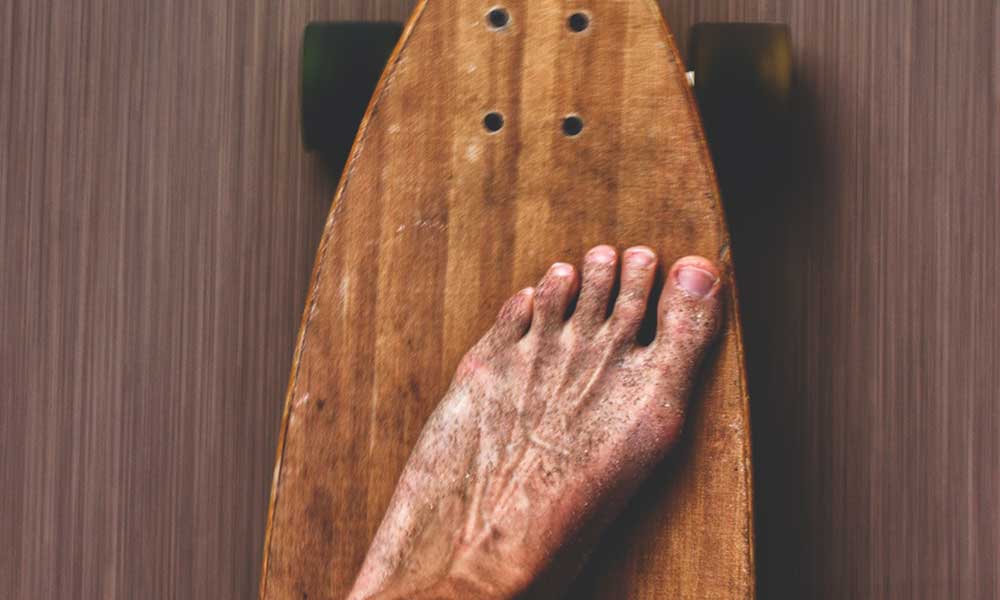Skateboarding dogs are a viral success. It’s the sort of eccentricity and cuteness that the internet craves and that’s why pups like Tillman (arguably the greatest and most famous of all skateboarding dogs) were able to generate tens of millions of views on YouTube.
If you’ve seen this skateboarding dog in action, you’ll know that it’s not simply a case of someone rolling a skateboard and then plonking an obedient dog on top of it. These dogs can actually skate, and they seem to love it.
So, how can you teach your dog to follow in their paw steps and become a viral sensation?
How Do you Teach your Dog to Skateboard?
Teaching your dog to skateboard requires a lot of patience and persistence. Whether you succeed or not will also depend on your dog’s nature. If they’re not very obedient, can’t stand/sit still for a moment, and treat every object as a chew toy, it’s not going to be easy.
Still, that doesn’t mean it’ll be impossible. Just follow these steps.
Find the Right Skateboard
Look for a wide skateboard that accommodates your dog’s stance. It should be at least an inch wider than their usual stance.
Show the Board Wheels-up
Bring the skateboard into your home and place it in a carpeted area with the grip tape facing down.
Let your dog sniff and inspect the skateboard to get used to it. If it doesn’t show an interest, encourage it to do so by introducing dog food and treats.
Once it is comfortable with the skateboard, start spinning the wheels to see how it reacts. Don’t overstimulate it—a single spin followed by an observation every 30 minutes or so should suffice.
Some dogs are uncomfortable with new objects and others will try to attack them, so this may take some time.
Start Rolling the Board
As soon as your dog is comfortable with the skateboard, turn it wheel side down, and start rolling it around.
Ideally, the skateboard should remain in a carpeted area so that it doesn’t roll around when your dog places its paws on it.
Keep praising the dog every time it interacts and expresses interest and then place the skateboard on a solid surface.
Gradually increase the rolls until your dog gets comfortable with a moving skateboard.
Encourage Your Dog to Get on the Board
Place your foot on the skateboard and encourage your dog to start stepping onto it. One or two paws are fine to begin with. You should reward your dog every time it places its paws on the skateboard.
Start Moving The Board With Your Dog on it
Encourage your dog to place all four paws on the skateboard and then start moving the skateboard with them on top.
If they don’t willingly climb on the skateboard, just wait until they have their front paws on and then place their back paws on the skateboard.
Alternatively, you can pick them up and place them on the skateboard.
Many dogs will react by jumping off, and this is fine. As well as you have followed the steps above, your dog should keep jumping on the skateboard and if you keep making those gradual movements, it will get comfortable eventually.
At this point, it’s important to only reward your dog some of the times they step on the skateboard. You don’t want to be in a position where you have to give them treats/food every time they touch it, so gradually reduce those treats.
Encourage Your Dog to Mount the Board
Start tapping the skateboard and commanding your dog to jump on it.
Placing a treat in front of the skateboard and push your dog forward so that it can reach over and grab the treat.
Eventually, you can place the treat down and then back away, waiting for your dog to push itself forward to collect the treat.
Let Them Enjoy The Board!
Skateboarding must become a habit for your dog to persist. They will develop the muscle memory needed to learn and when they do, they should be given regular access to a skateboard.
Many dogs become attached to their skateboards at this point, treating them like a favorite toy.
If your dog just barks at the skateboard or treats it like a chew toy, you just need to persist.
What Breeds of Dogs Can Skateboard?
The most famous skateboarding dogs are bulldogs, including the best dog skater of them all (see below). But many breeds can learn how to skateboard.
There are only a few exceptions to this rule. For instance, some dogs have very short legs and simply can’t reach the ground.
It’s often said that Welsh Corgis have this issue, but SirBunnyBottom, a skateboarding Welsh Corgi, would beg to differ.
Can A Dog Really Ride a Skateboard?
Yes! It sounds like a bizarre statement, but if you have seen the videos, you’ll know that it’s possible.
A trained dog will happily jump on the skateboard by itself and then use its paws to push itself along.
Who Are the Most Famous Skateboarding Dogs?
As noted at the outset of this article, one of the most famous skateboarding dogs was a bulldog named Tillman. He appeared in the Guinness Book of World Records as the Fastest Skateboarding Dog and also learned how to surf and skimboard.
Just take a look at this dog’s moves!
Unfortunately, that world record came in 2009, and as you might have guessed, Tillman is no longer with us. There are many videos of his skateboarding/skimboarding exploits online though, and if you’re trying to teach your dog to skateboard, we recommend checking them out.
There’s also a bulldog named Chowder who is obsessed with his skateboard and knows how to use it, and a dog named “Jumpy” who broke Tillman’s record in 2013. Otto is another record-breaking bulldog. Otto is from Lima, Peru, and was able to skate through the legs of 30 people in 2015.
Other pups that can skateboard include Bamboo, Odin, Schnitzel von Krum, and Sky.
Not all of these canines are bulldogs, proving that many other breeds can also learn some cool skateboard moves.







